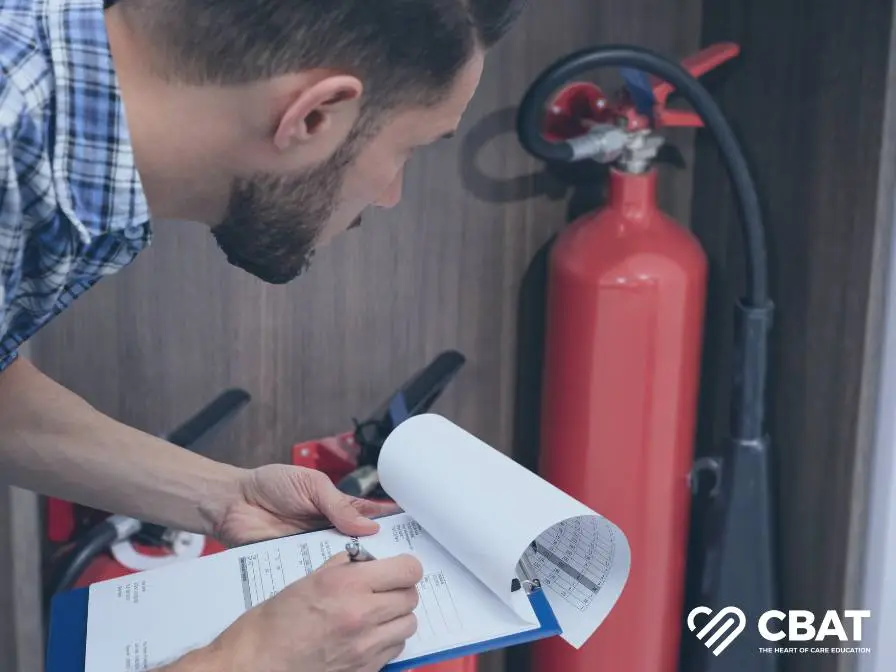Fire Safety in Care Homes

When it comes to fire safety in care homes, prevention is not just about compliance — it’s about protecting lives.
Vulnerable residents, limited mobility, and complex care environments mean that even small fires can have devastating consequences. That’s why proactive fire prevention and trained Fire Wardens are essential for every care setting.
This blog looks at fire prevention in care homes and explains why staff training plays a vital role in keeping residents safe.
Care homes are at a greater risk than many other workplaces. This is due to the complex environment in which staff operate.
Key Risk Factors Include:
- Residents that may struggle to evacuate quickly due to limited mobility or cognitive impairment
-
Specialised methods, such as evacuation chairs, same-floor movement, and staged exits.
-
High risk equipment such as medical devices that can increase the danger of a fire.
-
Older or modified buildings with complex layouts that can slow down evacuation.
-
The safety of residents depends heavily on the training, and response of care staff
Fire prevention and response training is a legal requirement. A robust fire safety strategy should include regular staff training, ongoing equipment checks, and evacuation plans tailored to the needs of every resident.
Essential Fire Safety Steps
Fire warden training is a vital aspect of safeguarding duties. A responsible person will be assigned to ensure that a care home is fully compliant with fire safety regulations; this responsibility tends to lie with the manager and senior members of staff.
According to Home Office statistics in 2024, care homes experience over 500 primary fires a year, with cooking and electrical faults among the top ignition sources.
A responsible person must adequately train their staff so they are prepared in the event of a fire and eliminate any risks that could cause danger in the setting.
4 Practical Steps for Fire Safety
1. Train Staff to Spot Risks Early
Many fires start from avoidable hazards like overloaded sockets, kitchen accidents, or missed smoking protocols. With the right training, staff can confidently spot and remove risks before they become emergencies.
Fire awareness training is a great starting point for team members to be proactive and competent in daily prevention.
2. Keep Evacuation Plans Clear and Accessible
A care home’s evacuation strategy must reflect the reality of its residents. Can staff quickly guide people with mobility aids? Are exits clutter-free? Regular drills and Fire Warden walk-throughs keep your plans practical and effective.
3. Involve All Team Members — Not Just Managers
From kitchen staff to carers to cleaners, everyone plays a role. Encourage open discussions about fire safety. Simple actions like unplugging unused equipment or reporting faults can prevent major incidents.
4. Review and Refresh Training
Regulations evolve, staff change, and risks shift. Ongoing refresher training and reviews keep your fire safety approach current. Don’t let familiarity breed complacency.
Further information can also be found in the Health Technical Memorandum (HTM) 05-03: Fire Safety in Healthcare Premises. It’s a document published by the UK Department of Health that provides advice and recommendations for fire safety in healthcare premises, including care homes.
Care home managers should consult with a qualified fire safety professional to ensure that they are meeting all of the relevant requirements and recommendations for fire safety in their facility.
For detailed guidance, refer to the Fire Safety Risk Assessment for Residential Care Premises provided by the UK Government.
Fire Warden Training with Care Business Associate Training
At Care Business Associate Training, we understand the unique challenges care homes face when it comes to fire safety. This starts with the right training. Learn more here.
Our CPD accredited Fire Warden Training course specialises in health and social care environments.
Trainees learn how to minimise the risk of fire, how to use firefighting equipment and develop evacuation strategies. This knowledge ensures that your care home complies with legislation and could save someone’s life during an emergency.
Whether delivered in-person or online, this one-day course covers everything from risk assessments to real-world evacuation planning, helping you move beyond compliance and protect your residents and staff.
We also delivery a Fire Awareness Training course that teaches participants how to conduct risk assessments and develop fire safety procedures based on the outcomes.